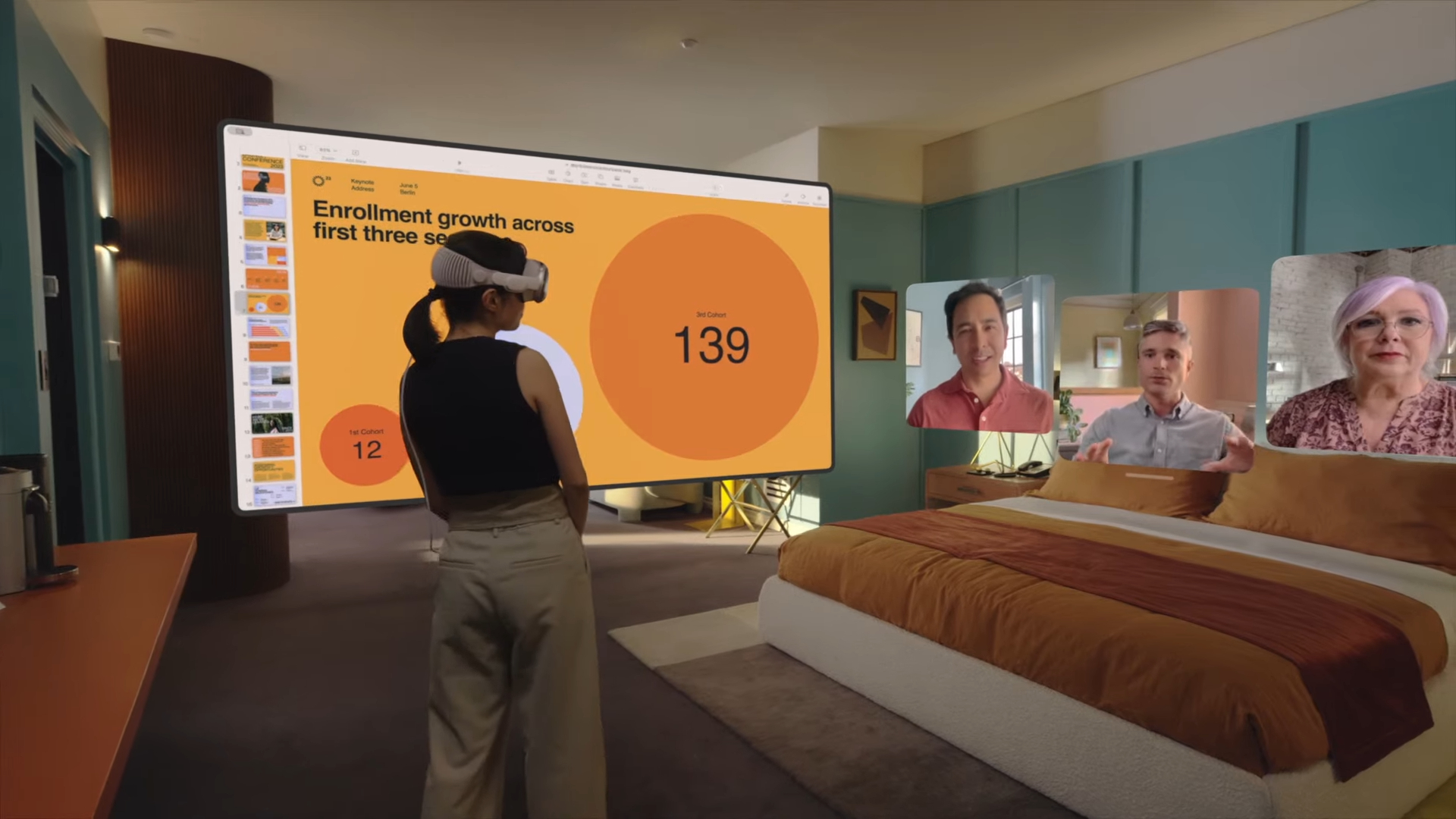Space Computer is the term used by Apple to refer to its Vision Pro headset, which actually belongs to the category of mixed reality. It is a marketing term, destined to become much more if the brand succeeds in its bet.
Do not speak of tablet, but of iPad. Forget LCD screens, it’s Liquid Retina. Also avoid the term facial recognition, we must say Face ID…
Historically, Apple has never liked to do like the others. The specialty of the Californian brand is to reinvent common terms to make believe that it is at the origin of a technology, while allowing it to impose its vision. A marketing diversion sometimes mocked, but terribly effective. Apple has managed to settle into the collective imagination as a unique brand, which does nothing like its competitors, even when it actually does the same thing.
With the Apple Vision Pro, a high-end mixed reality headset presented in June 2023 (which Numerama was able to try), the Californian brand is once again having fun reinventing terms known to all. Apple does not talk about virtual reality or mixed reality, but prefers “space computer”. A sumptuous way to take on the competition, while declaring its intention to do better.
What is a space computer?
In Apple’s vision, a space computer is a computer that is worn directly on the face. Rather than looking at its applications through a screen (computer, telephone, tablet, etc.), Apple offers to wear a headset that allows you to see the real world thanks to mixed reality, while projecting applications in the middle of your vision. That’s Apple’s definition of space computing, though it’s highly comparable to mixed reality. However, we can imagine that Apple imagines uses much more serious than the others, such as office work or web browsing.
A space computer is more powerful than a virtual reality headset
Spatial computing is not new, having encompassed all XR (virtual, mixed and augmented reality) technologies for more than 20 years. However, this term is little used. Developers talk about it when they make 3D applications for headsets, but the general public has mostly heard about virtual, mixed and augmented reality. Apart from Apple, no major manufacturer uses the term “space computer”.
On paper, the Apple Vision Pro is a mixed reality headset. By calling it a space computer, Apple is probably thinking that it has several cards to play:
- “Space computer” is more serious than a virtual reality headset which, in the minds of many, corresponds to a product designed for gaming.
- “Space computer” allows Apple to position its Vision Pro as a Mac of the future, designed to work.
- “Space Computer” illustrates the colossal power gap between Apple’s headphones and those of its competitors. The Vision Pro features the Mac’s M2 chip and an R1 coprocessor, while the others have modified smartphone chips.
- “Space computer” finally allows Apple to create a new category, without real competition. Apple does not (officially) need to align itself with services offered by others, on the pretext that its product is unique.
Can they become the norm?
In the coming months, it will be interesting to observe the response of Apple’s competitors. Meta, HTC, Google, Samsung… Will these giants continue to talk about virtual/mixed reality headsets? Or will they in turn embark on space computers? If Apple succeeds in its bet and the Vision Pro arouses the envy of users, there is no doubt that the “space computer” described by the Californian brand will become the norm. This new term could benefit the market all the more since VR has never really taken off…
If you liked this article, you will like the following ones: do not miss them by subscribing to Numerama on Google News.
